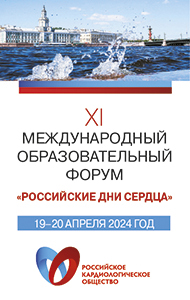Moderate drinking offers some CV benefits, but heavy drinking increases CV harm
All alcohol drinkers have an immediate higher risk for MI or stroke, but if they are moderate drinkers, that risk lessens after 24 hours, when the alcohol begins to produce some protective health benefits, according to research presented at the American Heart Association’s EPI/Lifestyle Scientific Sessions in Phoenix.
Heavy drinking, however, is associated with both short- and long-term risk for MI and stroke, researchers found.
“There appears to be a transiently higher risk of [MI] and strokes in the hours after drinking an alcoholic beverage, but within a day after drinking, only heavy alcohol intake seems to pose a higher CV risk,” Elizabeth Mostofsky, ScD, instructor at the Harvard T.H. Chan School of Public Health and postdoctoral fellow at Beth Israel Deaconess Medical Center, Boston, said in a press release.
Mostofsky and colleagues conducted a systematic review and dose-response meta-analysis of 23 studies (29,457 participants) that evaluated the relationship between alcohol and risk for MI, ischemic stroke and hemorrhagic stroke within 7 days of alcohol consumption. The study was simultaneously published in Circulation.
A complex physiologic response
Mostofsky and colleagues reported that, “Within 1 to 3 hours, a single dose of alcohol increases heart rate, interarterial electromechanical delay and plasminogen activator inhibitor levels, but by 12 to 24 hours, an alcohol dose consistent with two alcoholic beverages causes transient improvements in flow-mediated vasodilation, endothelial function and fibrinolytic factors.”
Drinking three or more drinks a day, however, increased the risk for hypertension, diabetes, CVD, stroke and MI mortality.
“Just after drinking, [BP] rises and blood platelets become stickier, increasing the risk [for MI] and strokes,” Mostofsky said in a press release. “However, regularly drinking small amounts of alcohol in the long term appears to both increase levels of HDL ... and reduce the tendency to form blood clots.”
According to the findings, moderate drinkers had an initial higher CV risk that lessened 24 hours after consumption and became protective for MI and hemorrhagic stroke (about 2-4 drinks: RR = 0.7), and within a week of moderate drinking, also protective against ischemic stroke (about 6 drinks: RR = 0.81).
Heavy drinking, however, was linked to increased CV risk both within 24 hours (about 6-9 drinks: RR = 1.3-2.3) and within the week (about 19-30 drinks: RR = 2.25-6.2).
Risks for MI and stroke
Mostofsky and colleagues reported that there was a U-shaped association (P < .001 for curve) between alcohol consumption and MI risk, with the greatest protection derived from approximately two drinks in a day (RR = 0.67) and the highest risk from approximately nine drinks in a day (RR = 1.59).
They also found U-shaped associations with ischemic stroke within 7 days (P < .007 for curve) and hemorrhagic stroke after 24 hours (P < .02 for curve). Drinking about 75 g of alcohol, approximately six drinks within a week, was associated with a 19% lower risk for ischemic stroke in the week after alcohol consumption, the researchers wrote. Drinking approximately 225 g of alcohol, about 19 drinks, however, more than doubled the risk for stroke in the following week, they found.
For hemorrhagic stroke risk, intake of 48 g of alcohol (approximately four drinks) per week was associated with a 38% lower risk, whereas 81 g (approximately seven drinks) per week was associated with a 1.26-fold higher risk the next day.
The researchers noted that binge drinking the same amount of alcohol associated with protective benefits does not provide the same results as moderate consumption during a week.
According to the 2015 Dietary Guidelines for Americans, moderate drinking means one drink per day for women and up to two drinks per day for men. – by Tracey Romero
References:
Mostofsky E, et al. Abstract P158. Presented at: American Heart Association’s EPI/Lifestyle Scientific Sessions; March 1-4, 2016; Phoenix.
Mostofsky E, et al. Circulation. 2016;doi:10.1161/CIRCULATIONAHA.115.019743.
Disclosure: The researchers report no relevant financial disclosures.
Source: www.healio.com






